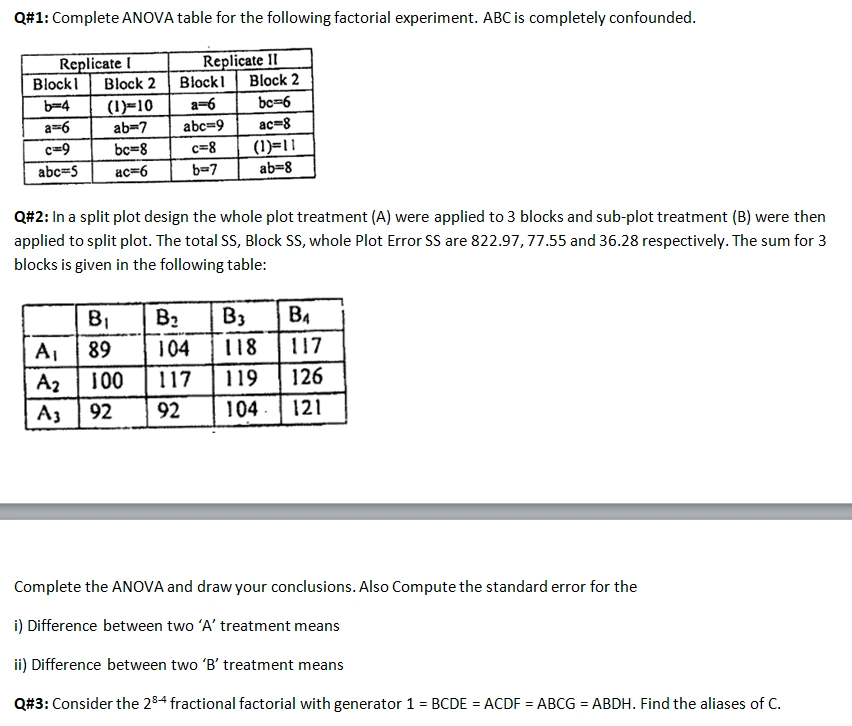[OBJECTIVE]
Subject: Advanced Experimental Design (Theory)
Time Allowed: 15 Min
Total Marks: 10
NOTE: ATTEMPT THIS PAPER ON THIS QUESTION SHEET ONLY. Division of marks is given in front of each question. This Paper will be collected back after expiry of time limit mentioned above.
Part-I Encircle the correct option, each question carries equal marks. (10)
1. In a ____________ design, a complete row or column of a Latin Square design is missing.
a) Factorial
b) Youden Square
c) Latin Square
d) None of these
2. The following design facilitates to Study the interaction effect:
a) Factorial
b) Completely Randomized
c) RCB
d) Latin Square
3. When the factors do not interact _________ designs are more efficient than one-at-a-time designs:
a) Factorial
b) Completely Randomized
c) RCB
d) Latin Square
4. A factorial model for data is called __________ if the presence of any term in the model implies the presence of all lower order terms.
a) Hierarchical
b) Completely Randomized
c) Split Plot
d) Latin Square
5. When the factors were analyzed according to their importance in the design, the following design is useful:
a) Factorial Design
b) Fractional Replication
c) Split Plot
d) Incomplete Block
6. In the following design, more than one randomization can be introduced:
a) Factorial Design
b) Fractional Replication
c) Split Plot
d) Incomplete Block
7. The block size of a 25 design confounded into 4 blocks will be:
a) 5
b) 32
c) 16
d) 8
8. The BIBD is called “balanced” because the ________ of the estimated difference of treatment effects, is the same for all pairs of treatments.
a) Mean
b) Variance
c) Ratio
d) None of these
9. Partially Balanced Incomplete Block Designs (PBIBD) allow us to run incomplete block designs with ______ blocks than may be required for a BIBD.
a) fewer
b) larger
c) same
d) None of these
10. A design with a= 12,k= 7,r=7, and b= 12 will be called:
a) BIBD
b) PBIBD
c) Latin Square
d) None of these
[SUBJECTIVE]
Subject: Advanced Experimental Design (Theory)
Time Allowed: 2 Hour 45 Min
Total Marks: 50
NOTE: ATTEMPT THIS (SUBJECTIVE) ON THE SEPARATE ANSWER SHEET PROVIDED
Part-II Give short answers, each question carries equal marks. (20)
Q#1: Advantages and Disadvantages of Factorial Design.
Q#2: Fractional Replication.
Q#3: Quasi Latin Squares.
Q#4: Split-Split Plot Designs.
Part-III Give detailed answers, each question carries equal marks. (30)



